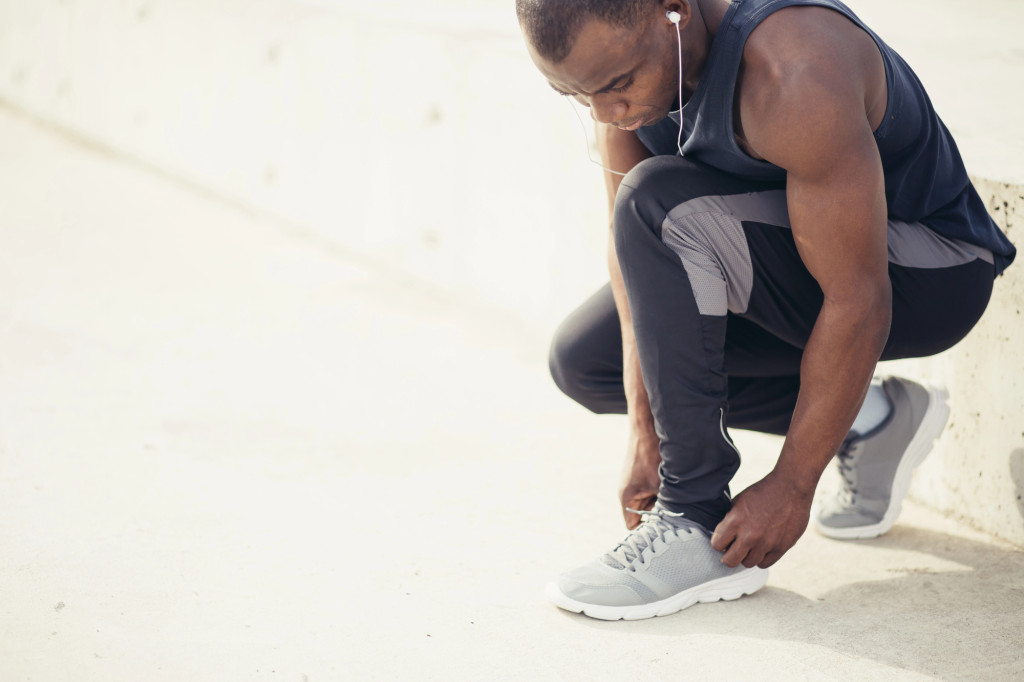Your feet carry you through life—literally. From sprinting through the airport to posted-up barbecues that turn into full-blown family reunions, your footwear needs to do more than look good. It needs to feel right. Let’s break down how to pick that one pair that never does you dirty.
Best Shoe Materials That Support All-Day Comfort
First things first—what your kicks are made of matters. You wouldn’t wear a wool suit to a beach party, so don’t let your feet suffocate in plastic and stiff leather on a day full of movement.
Here’s what your feet are lowkey begging for:
- Breathable mesh – Keeps things airy and sweat-free, especially when it’s pushing 90 outside.
- Natural leather – If treated well, it molds to your foot and gets better with age, like a fine whiskey or your favorite uncle’s stories.
- Cork or foam insoles – These give just enough bounce to soften your stride without feeling like you’re walking on marshmallows.
The wrong materials will have your feet plotting revenge by lunchtime. Lightweight, breathable, and adaptable—that’s the recipe.
Why Proper Fit Matters More Than Style
A clean silhouette is great, but a fresh look can’t save you from blisters or cramped toes. That’s fashion pain, and we’re not doing that in 2025.
Don’t size down because they “look sleeker.” You’ll be over here limping while your shoes stay Instagram-ready. A solid fit means your foot stays in place, your toes can spread naturally, and your heel isn’t doing the electric slide every step.
And if you’ve got wide feet? Say it with your chest and shop like it. For real, cramming into narrow pairs just ain’t worth it. Find brands that understand grown-man foot real estate. Style comes second to walking without a grimace.
Key Shoe Features That Reduce Foot Fatigue
You know that “I’ve been standing too long” ache? That’s avoidable if you know what to look for.
You want the kind of footwear that:
- Supports your natural foot shape
- Doesn’t stiff-arm your movement
- Has a lightweight build with some give
- Let your toes do their job
That’s where barefoot shoes come in. They’re built to work with your body—promoting natural movement, better alignment, and real foot comfort.
No need to sacrifice your knees or back for shoes that look good but feel like concrete after a few blocks.
Want a pair that checks all the boxes? Check out https://rutsubarefoot.com/collections/barefoot-sneakers — designed for everyday comfort without the gimmicks.
How Arch Support Impacts Long-Term Comfort
Let’s talk arches. Yours might be high, flat, or somewhere in between, but everyone needs some level of arch support. Otherwise? Say hello to foot pain, knee drama, and lower-back beef.
Barefoot-style designs like sneakers focus on natural alignment over gimmicks. They support your stride without controlling it like a stage mom. That’s the difference—freedom with function.
And newsflash: if your arch support is too aggressive or nonexistent, your body’s going to let you know. Pay attention to the signs. Discomfort? Soreness? That ain’t normal. That’s a cry for better shoes.
Picking the Right Sole for Your Daily Routine
Here’s the thing about soles—they make or break your comfort game. And your day.
You need different energy for chasing toddlers vs. hitting the gym vs. working a 9-to-5 on your feet. One size does not fit all. Choose based on what your day looks like.
Need grip? Look for textured outsoles.
Need a bounce? Lightweight rubber’s your friend.
Need grounding? Go minimalist for full-foot connection.
If your sole is stiff as your cousin’s macaroni at Thanksgiving, you’re gonna feel it by 3 p.m. Don’t do yourself like that.
Comfort vs. Cushion: What Your Feet Need
Too much cushion can backfire. It sounds like a good idea—more softness = more comfort, right?
Wrong.
Cushion masks problems. It doesn’t fix alignment. It doesn’t strengthen your feet. It’s like throwing extra pillows on a bad mattress—it helps a little, but the root issue is still there.
Barefoot-style shoes focus on function over fluff. You’re not walking on cake, you’re letting your foot do what it’s built to do. You’ll notice more balance, better posture, and fewer aches.
So before you fall for “cloud-like comfort,” ask yourself: Do you want pampering, or do you want performance?
Choosing Shoes That Feel Good Every Step of the Way
At the end of the day, you want something that fits like an extension of you. Not too loose, not too rigid, just that sweet spot where your stride feels natural and free.
It’s less about trends, more about how your body responds. That one pair that keeps you grounded but never weighs you down. The ones that get you, even when you’ve got miles to cover.
If you’re still searching, start with the function. Then go for style. Not the other way around. You deserve comfort that keeps up, and maybe even makes you walk a little taller.
FAQs
What materials work best for shoes you’ll wear every day?
Go with breathable mesh, quality natural leather, or flexible knit uppers with cork or foam insoles. These keep things lightweight, cool, and form-fitting for whatever your day brings. Avoid synthetic materials that don’t breathe—they’ll have your feet feeling like they’re wrapped in plastic bags.
How do I know if my shoes actually fit right?
A good fit means your toes have wiggle room without your heel sliding around. Your foot should feel secure without being squeezed or compressed. If you’re getting pressure points or blisters, size up or try a different brand—and shop later in the day when your feet are naturally swollen for the most accurate fit.
Are barefoot sneakers actually comfortable for daily wear?
Absolutely, when you pick the right ones. Barefoot sneakers focus on flexibility, proper foot alignment, and ground connection, which can reduce fatigue and improve how you carry yourself over time. Just transition gradually if you’re coming from traditional thick-soled shoes—your feet need time to adapt and strengthen.
What matters more—cushioning or support?
Support wins every time. A cushion might feel good initially, but it doesn’t help long-term—it’s like having someone carry you everywhere, feels nice but makes your muscles weaker. You want designs that let your foot move naturally with just the right amount of padding where you need it.
Can better shoes actually help with back pain?
Yes, absolutely. How your feet hit the ground affects your posture from the bottom up—poor footwear throws off your entire alignment from ankles to spine. Flexible, supportive soles that move with your body help reduce strain on your knees, hips, and lower back.
Photo Credit: DepositPhotos.com




